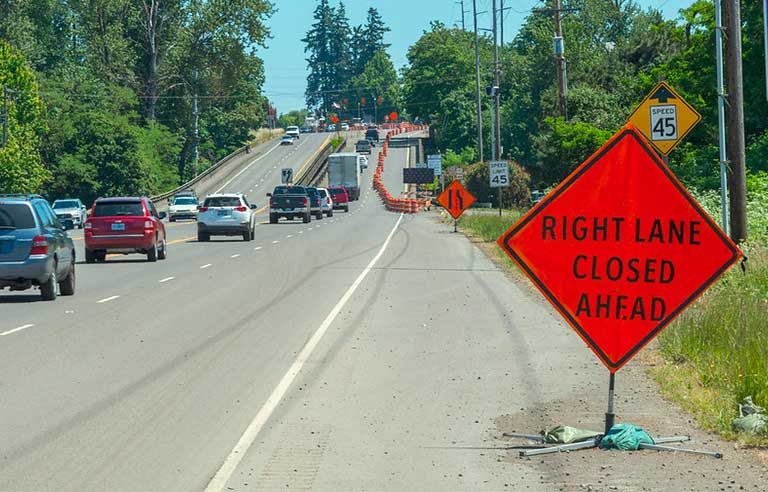
Photo: Oregon Department of Transporation/Flickr
Washington — A Federal Highway Administration final rule includes updates intended to improve safety and mobility for workers and drivers in roadway work zones.
Set to go into effect Dec. 2, the rule revises the agency’s Work Zone Safety and Mobility Rule and the Temporary Traffic Control Devices Rule for the first time since 2004.
Under the final rule, state departments of transportation are required to use positive protection devices such as temporary traffic barriers when:
- Work zones lack tunnels, bridges or other means for workers to escape traffic.
- Workers face “substantial” exposure to traffic, in zones set up for two weeks or more.
- Workers operate within one lane width of lanes open to traffic.
- Speeds of at least 45 mph or high traffic volumes are anticipated.
- Drop-offs, unfinished bridge decks or other road hazards will be in place overnight or longer.
State DOTs must also perform a work zone programmatic review every five years to “assess the effectiveness of work zone safety and mobility processes and procedures” and share findings with FHWA.
The rule cites data from the Fatality Analysis Reporting System showing that 891 fatalities occurred in work zones in 2022, up from 590 in 2011.
“With USDOT’s commitment to Vision Zero – a future where no one dies on our roads – it’s critical that we keep people safe in work zones, including travelers and those constructing our roads,” Kristin White, FHWA’s acting administrator, said in a press release. “This work zone safety rule took years in the making to engage communities, partners, and public and private sectors to ensure we prioritize work zone safety and reduce congestion to keep us all safe every day.”
McCraren Compliance offers a full range of safety and health training and consulting services. Plus we can help you incorporate well-being into your traditional systems in order to support the Total Worker Health of your workforce.
Call 888-758-4757, email info@mccrarencompliance.com or visit our website www.mccrarencompliance.com
Original article published by Safety+Health an NSC publication


